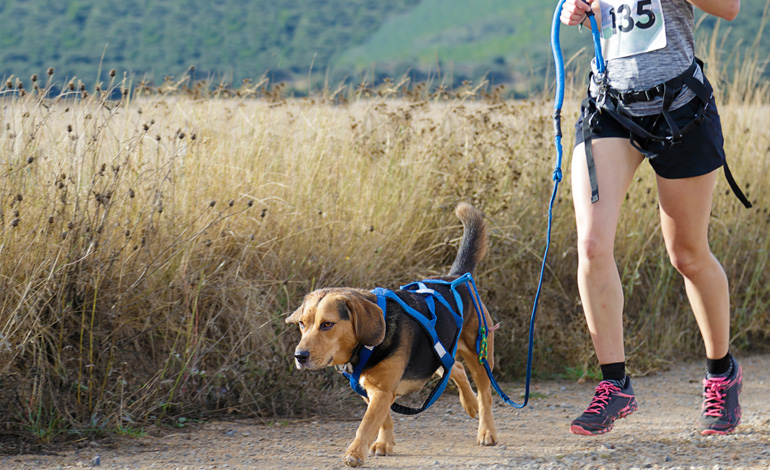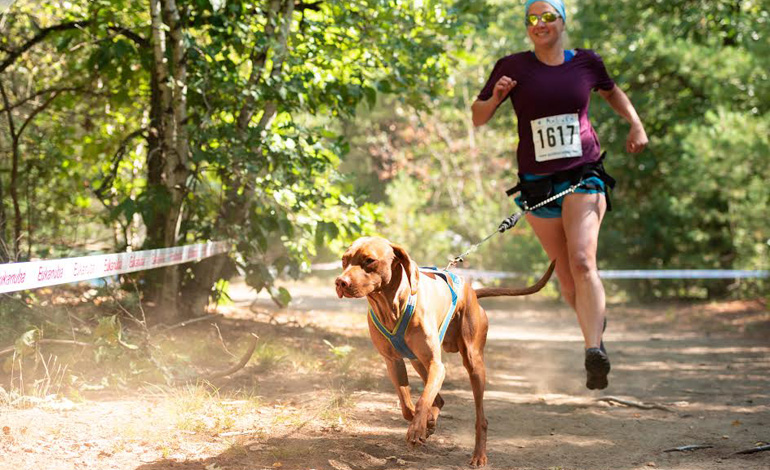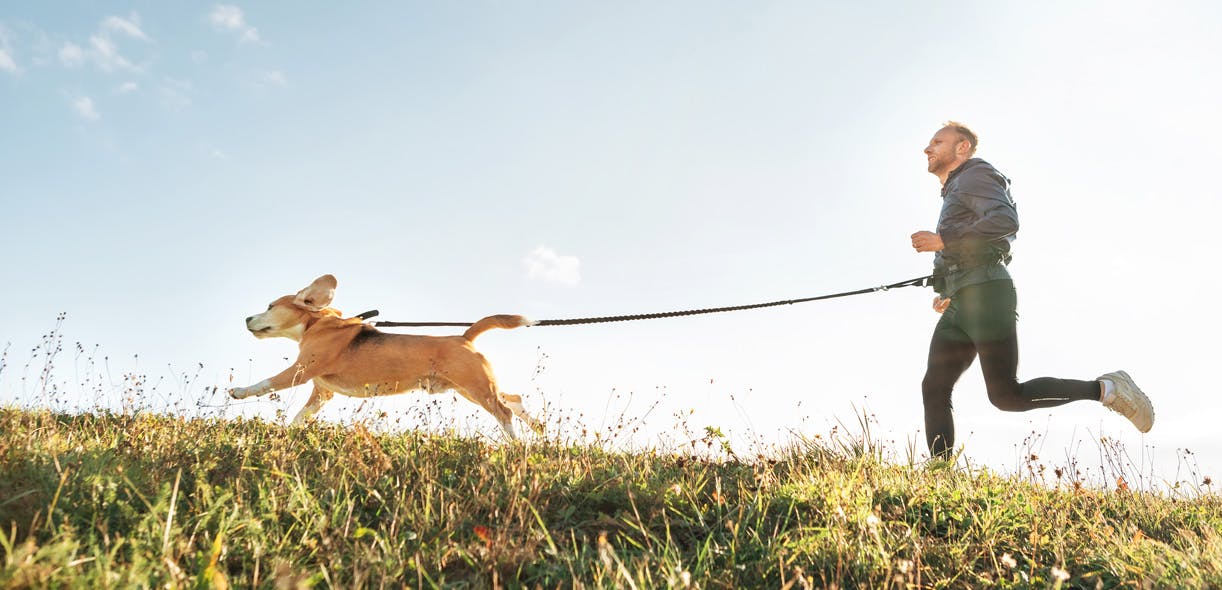The starting gun is fired. Dogs bark, humans call out, cords inevitably cross. The pack is whipped up with excitement but the chaos is short-lived. In the forest, just a short distance into the course, silence has taken over. The dogs and their humans are focusedâbound together by the shared goal which makes this cooperative sport so magical.
Countrywide, canicross is becoming an increasingly popular activity. There isnât a school for beginners but clubs, which are cropping up all over Canada, offer workshops that are an ideal setting to meet enthusiasts eager to share a thing or two about their sport.
A dog can harm itself if the pace is excessive, so always respect its rhythm and speed.
âWorkshops are often overseen by a federation which ensures their quality,â says Marc-Antoine Pelege, a canicross enthusiast and conference speaker. âIn a workshop, you can learn how to guide your dog, give him clear orders and concentrateâdespite the chaosâby training alongside other dogs.â
Hitching up
In canicross, effort is shared between the dog and the human. Propulsion is not exclusively in the dogâs court, which means that even the smallest dogs, such as Teckels and Chihuahuas, can take part in the sport. But thereâs no way around the fact that the bigger the dog, the better the power. On the canicross circuit, Greyhounds, Pointers, Labradors and Huskies far outnumber smaller breeds.
To get started, youâll need to spend around $100 to buy a belt for yourself, a harness for your dog and an elastic cord. Canicross kits are available in pet supply stores but to avoid wounds, consider having a harness custom-made for your dog at suppliers such as Nahak Sports and AKKO Sports.
âA dog running with a badly adjusted harness is like a person running in shoes that are too small,â warns Marc-Antoine Pelege. The harness should be selected in accordance with the dogâs weight. Better quality harnesses are more likely to have good shoulder padding.
Isabelle and Clovis, two proud canicrossers at Guides Canins.
Training
To avoid injuring your dogâs joints, itâs important that a dog be aged at least 14 months before beginning canicross. âWhen your dogâs 6 months old you can start getting him used to wearing a harness, but it should be play more than anything else,â says Pelege. âStart him off pulling a light weight over 50 to 100 metres, congratulate him and stop there.â
A typical training session is just like a regular run. You can do some interval training (for instance, 30 seconds full out, repeated 10 times) to train for race starts and stops. You can also do distance training (for example 8 â 10 kilometres without stopping, at a comfortable pace for your dog). Itâs also essential to practise giving your dog orders, such as âgo leftâ, âgo rightâ, âaheadâ, âease upâ, âspeed upâ.
Avoiding injuries
Like people, dogs can injure themselves when they overdo it. Itâs essential to respect your dogâs speed. Donât wait for your dogâs tongue to hang to one side or foam at the mouth before you stop. âIf he decides that heâs had enough, heâll stop pulling, look away and sit down,â explains Pelege. âDuring the spring and summer months, itâs also important to watch out for overheating. We recommend that people stop when the temperature exceeds 15°C and be sure that their dog is well hydrated, whatever the season.â
With its rising popularity, canicross is also becoming increasingly rule-bound thanks to the work of several associations. To find out more about the sportâs rules and the official races, consult The Canadian Association of Harness Dog Sports and The International Federation of Sleddog Sports.
Credit : Isabelle Maure
Cover : Once on the course, silence reigns: both dogs and humans are fixed on the race.
